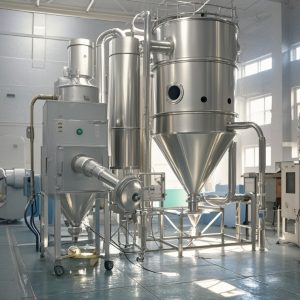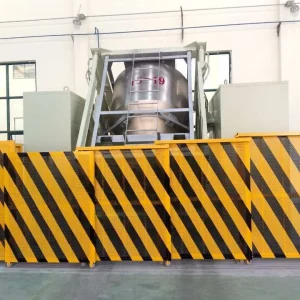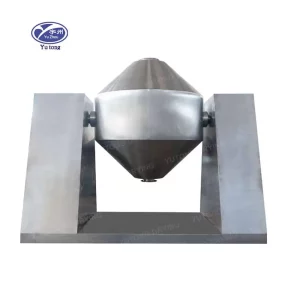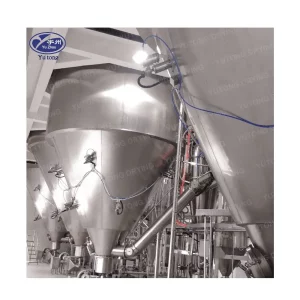A spray dryer is a method of rapidly drying a liquid or slurry into a dry powder with a hot gas. Many heat-sensitive products, such as foods and medicines, favor this technique of drying.
What is a Spray Dryer?
A spray dryer separates solute as solid, solvent as vapor; material is collected in a drum or cyclone. A nozzle sprays the liquid input stream into a hot vapor stream, causing it to evaporate.As droplets evaporate, a nozzle maximizes heat transfer, forming solids. High-pressure single-fluid and two-fluid nozzles are primary for drying.
When compared with other methods of drying, a spray dryer works faster than other methods of drying. The spray dryer simplifies the process, turning a solution into dried powder in a single step, boosting profit margins.
In pharmaceutical production, spray drying produces Amorphous Solid Dispensation by evenly dispersing Active Pharmaceutical Ingredients into a polymer matrix. So, this boosts drug dispersion by elevating the energy level of active chemicals, aiding their effective distribution in the body.
How does Spray Dryer work?
The spray drying process consists of five key processes, regardless of the factory’s level of sophistication:
-
Wet Process:
The materials intended for drying exist in a liquid condition before undergoing spray dryer. The pre-spray drier procedure aims to prepare the materials in a manner that enables successful spray drying and maximizes yield.
-
Atomization:
The atomizing liquid influx into tiny droplets ensures rapid drying, significantly increasing particle surface for effective humidity escape.
-
Contact between the dry substance and the air:
Hence, heated air efficiently dries sprayed droplets, enhancing moisture absorption and particle drying in the spray chamber. The entrance has a low relative humidity, while the exit has a high relative humidity, along with a lower temperature. Air can be blown to the product either co-currently from the top of the tower or counter-currently from the bottom. In many processes, counter-current is a favored choice, but for spray drying, co-current provides a significant advantage: the higher-temperature air contacts the particles with the highest humidity first, thereby preventing the particles from overheating.
-
Drying:
Drying in the spray chamber follows particle movement, gradually removing moisture through mass and heat transfer with surrounding air.
-
Solids Separation:
It is vital to gather the particles once they have dried. Cyclones often perform such separations, with the option of equipping them with filters to enhance their effectiveness. The powder is gathered in the spray dryer’s bottom and pneumatically delivered to a cyclone, where it is separated from the air. The drying chamber directs the air to another cyclone, which separates any fines that the air may have carried over and returns them to the main product stream. Normally, we reject humid air, but in specific cases, we can utilize it for pre-heating because it remains hot.
- In the world of industrial processing and manufacturing, spray dryers play a crucial role in transforming liquid substances into powdered forms. A spray dryer is a specialized piece of equipment that uses a combination of atomization and hot air to rapidly dry a liquid feedstock, producing a dry powder with unique properties.A spray dryer consists of several main components. At the heart of the system is the atomizer, which is responsible for breaking up the liquid feed into fine droplets. There are different types of atomizers, including pressure nozzles, rotary atomizers, and two-fluid nozzles. Each type has its own advantages and is suitable for different applications based on factors such as the viscosity of the feed, the desired droplet size, and the production rate.
The hot air source is another essential part of the spray dryer. This can be provided by a gas burner, an electric heater, or a steam heat exchanger. The hot air is blown into the drying chamber, where it comes into contact with the atomized droplets. The high temperature of the hot air causes the moisture in the droplets to evaporate rapidly, leaving behind dry particles.
The drying chamber is typically a large cylindrical or conical structure. It provides the space for the droplets to dry and for the powder to be collected. The design of the drying chamber can vary depending on the specific requirements of the process. Some drying chambers are designed to promote good air circulation and ensure even drying of the droplets. Others may have special features such as baffles or cyclones to enhance the separation of the powder from the exhaust air.
Once the droplets are dried, the resulting powder is collected at the bottom of the drying chamber or in a separate collection device. The exhaust air, which now contains moisture and any remaining fine particles, is usually filtered to remove contaminants before being discharged to the atmosphere.
The process of spray drying begins with the preparation of the liquid feed. The feedstock can be a solution, suspension, or emulsion of various substances, depending on the intended end product. The feed is then pumped to the atomizer at a controlled rate.
In the case of a pressure nozzle atomizer, the liquid is forced through a small orifice under high pressure, creating a fine spray of droplets. Rotary atomizers, on the other hand, use a high-speed spinning disk to throw off the liquid in the form of droplets. Two-fluid nozzles use a combination of compressed air and the liquid feed to produce atomization.
As the droplets enter the drying chamber, they are immediately exposed to the hot air. The heat transfer from the hot air to the droplets is very rapid due to the large surface area of the droplets. The moisture in the droplets evaporates, and the particles begin to dry. As the drying process continues, the particles become smaller and denser as more moisture is removed.
The drying time of the droplets depends on several factors, including the size of the droplets, the temperature and humidity of the hot air, and the residence time in the drying chamber. Smaller droplets dry more quickly than larger ones, and higher temperatures and lower humidity levels in the hot air accelerate the drying process.
After the drying is complete, the powder is collected and can be further processed or packaged as needed. The properties of the powder, such as particle size distribution, moisture content, and bulk density, can be controlled by adjusting various parameters of the spray drying process.
For example, in the food industry, spray drying is widely used to produce powdered milk, coffee, and fruit juices. The controlled drying process ensures that the nutritional value and flavor of the original product are retained in the powder. In the pharmaceutical industry, spray drying is used to produce drug powders with specific properties for better solubility and stability.
In conclusion, a spray dryer is a complex but highly effective piece of equipment that plays a vital role in many industries. By understanding how a spray dryer works, manufacturers can optimize the process to produce high-quality powders with the desired properties. Whether it’s for food, pharmaceuticals, chemicals, or other applications, spray drying offers a reliable and efficient method for converting liquid substances into dry powders.
We provide the latest technology evaporators, crystallizers, spray dryer, distillation system, solvent recovery systems, and heat exchangers. Contact us today to get amazing processing equipment for various industries.

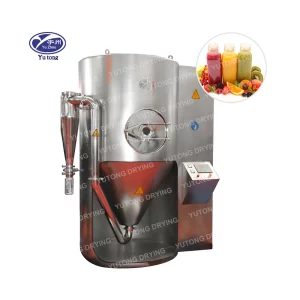
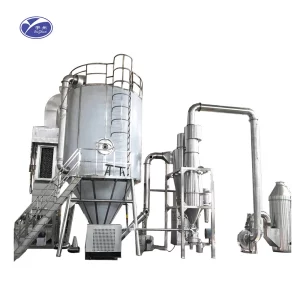
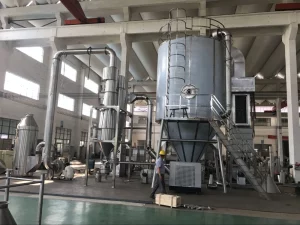 Once the droplets are dried, the resulting powder is collected at the bottom of the drying chamber or in a separate collection device. The exhaust air, which now contains moisture and any remaining fine particles, is usually filtered to remove contaminants before being discharged to the atmosphere.
Once the droplets are dried, the resulting powder is collected at the bottom of the drying chamber or in a separate collection device. The exhaust air, which now contains moisture and any remaining fine particles, is usually filtered to remove contaminants before being discharged to the atmosphere.
